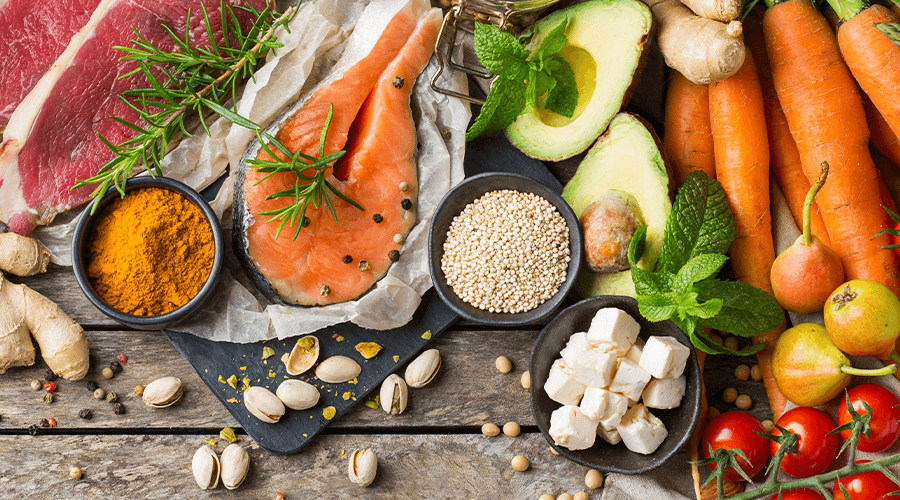
The Paleo Diet, inspired by the diet of ancient hunter-gatherers, emphasizes the consumption of whole, unprocessed foods such as vegetables, nuts, seeds, and meat. This diet aims to replicate what our ancestors might have eaten thousands of years ago, despite regional dietary variations. Adhering to this diet could not only lead to significant weight loss but also offer substantial health improvements, including a reduced risk of lifestyle diseases like obesity, diabetes, and heart disease. Anthropologists believe that the Paleo Diet also contributed to evolutionary changes in humans, including brain size expansion and a decrease in the size of the gastrointestinal tract.
What to Eat on the Paleo Diet
A Paleo diet can vary but primarily includes:
- Unprocessed meats
- Fish and seafood
- Eggs
- Fresh vegetables and fruits
- Tubers like potatoes and sweet potatoes
- Nuts and seeds
- Healthy fats from extra virgin olive oil and avocado oil
- Herbs and spices for flavoring
Foods to Avoid
While embracing the Paleo lifestyle, certain foods are best left out of your diet, including:
- Processed foods and sugars, including soft drinks and candies
- Grains such as wheat and barley
- Most dairy products, particularly low-fat varieties
- Legumes, including beans and lentils
- Some vegetable oils like soybean and corn oil
- Artificial sweeteners
Enjoying the Paleo Diet
To adhere to the Paleo diet, it’s crucial to read ingredient lists and nutrition labels carefully, even on foods labeled as health foods. However, there’s room for flexibility within the Paleo diet, allowing for personal adjustments and preferences. For instance, some modern Paleo variations include grass-fed butter and gluten-free grains like rice.
Indulgences on the Paleo Diet
Occasional indulgences are allowed within the Paleo framework, including quality red wine rich in antioxidants and dark chocolate with a cocoa content of 70% or higher, known for its health benefits.
Beverage Choices
Staying hydrated is essential, with water being the primary drink of choice. Additionally, tea and coffee are acceptable as they are rich in antioxidants and have several health benefits.
Potential Risks and Considerations
While the Paleo diet offers numerous health benefits, it’s not without its drawbacks. It eliminates several nutrient-rich food groups, which might lead to potential nutrient deficiencies. For individuals transitioning to a high-fiber diet like Paleo, there might be initial digestive discomfort. It’s also important to recognize that dietary needs are individual, and what works for one person may not be suitable for another.
Getting Started: A Sample Paleo Menu
The Paleo diet offers a diverse range of food options, allowing for creativity and variety in meal planning. From meat and seafood to fresh vegetables and healthy fats, the diet encourages eating whole foods for better health. Before embarking on the Paleo diet, it’s advisable to consult with a healthcare professional to ensure it aligns with your individual health needs and goals.
